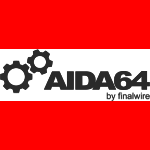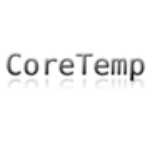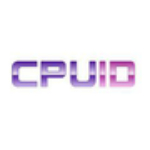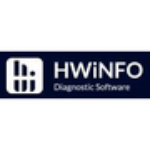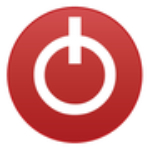List of Best Hardware Monitoring Software
Showing 8 of 8 productsAIDA64 is a software designed to provide detailed information about your devices hardware and software components. Featuring a user-friendly interface diagnostic tools, AIDA64 allows users to monitor, benchmark, and troubleshoot their system with eas...Read AIDA64 Reviews
Core Temp is a leading software program that accurately monitors the temperature of your computers processor. Designed for both casual and professional users, Core Temp provides real-time updates on CPU temperature and helps prevent overheating, ensu...Read Core Temp Reviews
CA SYSVIEW Performance Intelligence the ultimate tool for optimizing your systems performance. With advanced monitoring and diagnostic capabilities, this robust software provides actionable insights into your mainframe environment to help you stay ah...Read CA SYSVIEW Performance Intelligence Reviews
SpeedFan is a solution for monitoring and controlling your computers fan speed and temperature. With its user-friendly interface features, SpeedFan allows you to easily optimize your systems performance and ensure that it stays cool is a . Take the f...Read SpeedFan Reviews
HWMonitor is a solution for monitoring your computers hardware components. With its user-friendly interface and powerful features, HWMonitor gives you real-time updates on crucial aspects of your system such as temperature, voltage, and fan speed. Do...Read HWMonitor Reviews
HWiNFO is an incredibly powerful and informative software that provides users with detailed and accurate information about their computers hardware components and system. With its user-friendly interface and extensive features, HWiNFO is a must-have...Read HWiNFO Reviews
ParkView Hardware Monitoring is a all-in-one solution for real-time monitoring of your hardware. Say goodbye to manual checks and hello to effortless supervision of your systems. With ParkView, ensure maximum efficiency and performance of your hardwa...Read ParkView Hardware Monitoring Reviews
Real Temp is a software designed to monitor and track the temperature of your computers CPU. With its easy-to-use interface and accurate measurements, Real Temp provides users with essential information to prevent overheating and maintain optimal per...Read Real Temp Reviews
- What Is Hardware Monitoring Software?
- Top Reasons Why Businesses Need Hardware Monitoring Software?
- What Are the Top Key Features of Hardware Monitoring Software?
- What Are the Top Benefits of Hardware Monitoring Software?
- What Are the Steps to Choose the Right Hardware Monitoring Software?
- What Are the Types of Hardware Monitoring Software for Different Industries?
- What Are the Technology Trends for Best Hardware Monitoring Software?
- What Are the Deployment Options for Hardware Monitoring Software?
What Is Hardware Monitoring Software?
A software programme that monitors the operation of your computer hardware and its components is known as hardware monitoring software. It monitors a variety of performance measures, including CPU temperature, hard disc usage, RAM utilisation, and fan speed, and can issue warnings if any of these exceed pre-set thresholds.
This guarantees that your CPU, RAM, hard drive, video card, and other components are operating at peak efficiency and helps to prevent significant hardware problems from occurring.
A typical hardware monitoring package will also offer you with additional system information, such as the temperature of the northbridge and southbridge chips. It is also in charge of identifying new hardware components introduced to your computer and prompting you to install the necessary drivers.
These programmes can also assist you in benchmarking your computer and determining how it compares to other machines, allowing you to spot weak points and locations where components should potentially be upgraded. Computer hardware monitoring software ensures your computer's sustained performance and reliability by monitoring its health.
Top Reasons Why Businesses Need Hardware Monitoring Software?
1. Keep track of a company's server performance and availability. A firm can use hardware monitoring software to identify and address performance issues in real-time.
2. Monitor and detect any system hardware component or disc failure, and notify the appropriate staff for prompt and successful repair.
3. Track down memory, CPU, and disc use issues; discover the problem fast before it affects system performance.
4. Keep an eye on the system's power and temperature to ensure there are no sudden changes.
5. Check the performance of external hardware devices such as printers, scanners, and other peripherals.
6. Verify that network peripherals such as routers, switches, and other devices are operational.
7. Detect unauthorized hardware access attempts, such as thefts, damage, and sabotage.
8. Gather detailed data reports to assist in analysing existing system utilisation and deciding on hardware improvements.
9. Improve system security by keeping online dangers out of the hardware.
10. Receive quick notifications if any hardware component fails to work properly.
11. Keep an eye on the system logs for any error messages or cautions.
12. Implement automated processes to improve hardware performance and monitor system health.
13. Detect hardware changes automatically and notify the appropriate team members.
14. Resolve software error warnings before they become hardware issues.
15. Monitor for hardware failure and limit the possibility of system crashes.
What Are the Top Key Features of Hardware Monitoring Software?
The top key features of hardware monitoring software typically include:
• Sensor Monitoring: Monitoring and tracking of temperature, fan speed, power supply voltage, and other hardware health indicators.
• System Performance Data: Track and analyse CPU and memory utilisation, as well as other system performance data.
• Alerts and Notifications: Be notified when something crucial occurs or the system's performance suffers so you may take appropriate action.
• Mobile App: A mobile app allows you to see and analyse data from anywhere and at any time.
• Automated Reports: Generate reports based on hardware monitoring data automatically for enhanced visibility and efficiency.
• Customizable Dashboards: Create attractive, easy-to-interpret graphs and charts with customizable dashboards to gain better insights on your hardware.
• Log Data Retention: Log data can be stored for offline analysis and backup.
• Third-Party Integration: Enable integration with third-party and legacy systems for improved business procedures.
What Are the Top Benefits of Hardware Monitoring Software?
The top benefits of hardware monitoring software include:
1. Increased Efficiency: Computer hardware monitoring software can aid in the effective analysis, control, and monitoring of all hardware components of a system, providing actionable data to improve system efficiency and save costs.
2. Improved Reliability: Hardware monitoring tools can provide improved insight into the status of a system's hardware components, such as temperature and fan speed, to ensure that each component is correctly operating.
3. Improved Performance: The data given by monitor hardware software can assist in spotting potential performance issues and resolving them before they become a problem.
4. Faster Troubleshooting: The best hardware monitoring software delivers detailed diagnostics and real-time analytics, which can speed up troubleshooting and reduce the amount of time spent on problem resolution.
5. Improved Security: Hardware monitoring solutions can help lower the risk of security risks and data breaches by monitoring hardware components and sending notifications for abnormal activity.
6. Comprehensive Reports: The best pc hardware monitoring software reports can provide precise information on the performance of hardware components and enable simple comparisons, making it easier to discover and handle any issues.
What Are the Steps to Choose the Right Hardware Monitoring Software?
1. Establish your hardware monitoring needs: The first step is to identify which hardware components require monitoring. Servers, workstations, storage systems, routers, switches, firewalls, and application-specific hardware are examples of components to consider.
2. Determine the core features you need: Depending on the hardware components that must be monitored, you may require different software functions. Monitoring, alerting, reporting, and analytics should all be included.
3. Understand the scalability of the software: Check to see if the best software for hardware monitoring can scale with your hardware utilisation.
4. Research customer reviews and compatibilities: Investigate user reviews for the software to get a more realistic picture of quality and consumer happiness. Also, ensure that the software is compatible with your operating system, other hardware, and any specific apps that you may require.
5. Evaluate the pricing structure: Consider the cost of the programme and how it will affect your entire budget.
6. Decide whether you need cloud-based services: In general, cloud-based software reduces hardware and installation costs and may provide additional functionality not accessible with non-cloud choices.
7. Test the software: Investigate whether the choice has a free trial and test the programme to ensure that it suits your needs and performs properly.
8. Choose the right hardware monitoring software: After you've reviewed all of the above factors, select the programme that best suits your needs and budget.
What Are the Types of Hardware Monitoring Software for Different Industries?
There are several types of hardware monitoring software for different industries. These include:
1. Data center monitoring: Data centers and IT managers use this software to monitor the performance of technology such as servers, storage, virtual machines, and networks. This allows them to discover possible problems or failures before they occur, allowing them to address issues and save downtime.
2. Medical equipment monitoring: Healthcare personnel use this software to monitor the performance of medical equipment such as X-ray, ultrasound, and MRI devices. This allows them to ensure that the equipment is operationally sound and safe to use.
3. Inventory tracking: Businesses use the best hardware monitoring tool to track inventory levels and ensure they have adequate products stocked to avoid running out of stock.
4. Automotive industry monitoring: Mechanics and automotive specialists use this software to monitor the functioning of cars and other vehicles. This allows them to diagnose problems quickly and keep automobiles running smoothly.
5. Industrial automation monitoring: Manufacturers and industrial facilities use this software to monitor the performance of machinery, such as robotics and automated systems. This allows them to assure personnel safety and production precision.
What Are the Technology Trends for Best Hardware Monitoring Software?
The technology trends for best hardware monitoring software are:
1. Increasing Use of Artificial Intelligence (AI) and Machine Learning (ML): AI and machine learning are increasingly being employed as strong tools for detecting and diagnosing hardware faults in the best software for hardware monitoring.
AI-powered hardware monitoring systems can continuously monitor performance data and metrics, identify faults, and deliver alerts when issues arise.
2. Increased Automation: hardware monitoring tools are also becoming more automated. Automated solutions can help to reduce the manual attention and labor-intensive duties involved with hardware maintenance and monitoring.
Automated hardware monitoring solutions can discover and resolve issues before they become a problem, saving time and money.
3. Enhanced Fault Tolerance and Scalability: The best hardware monitoring software must be scalable in order to meet the changing needs of IT infrastructures. Modern software solutions must be capable of detecting errors rapidly and precisely, as well as providing dependable fault isolation and recovery.
Solutions must also be capable of detecting malicious activity and protecting the security of monitored systems at all times.
4. Improved Interoperability and Security: APIs and web-based services will continue to be popular in monitor hardware software. This will allow for faster and more secure communication and collaboration among various systems and applications, boosting the efficiency of the data acquired.
Furthermore, improved security protocols and technologies will aid in the protection of data and the secrecy of the monitoring systems.
5. Cloud-Based Solutions: Cloud computing technologies have advanced significantly, and an increasing number of hardware monitoring solutions are utilizing cloud services. Cloud-based solutions for hardware monitoring systems can enable rapid scalability, robustness, and redundancy, allowing them to rapidly adapt to changing IT environments.
Additionally, the cloud improves security and access control, allowing businesses to better protect their monitored systems.
What Are the Deployment Options for Hardware Monitoring Software?
The deployment options for hardware monitoring software would vary depending on the specific software. Generally speaking, there are three common deployment options:
1. Cloud-based: A cloud-based deployment hosts the best hardware monitoring software on an Internet-based server, making it available at any time and from any location. This is usually the most cost-effective and scalable solution, but it may provide you little control over data security.
2. On-premise: An on-premise deployment requires hosting hardware in a physical location. This method of deployment is more expensive and requires ongoing maintenance, but it gives you more control over data security and customization.
3. Hybrid: A hybrid deployment, as the name implies, is a blend of cloud-based and on-premise deployments. This deployment type enables enterprises to benefit from the cloud's scalability while yet maintaining control over data security and customization.
